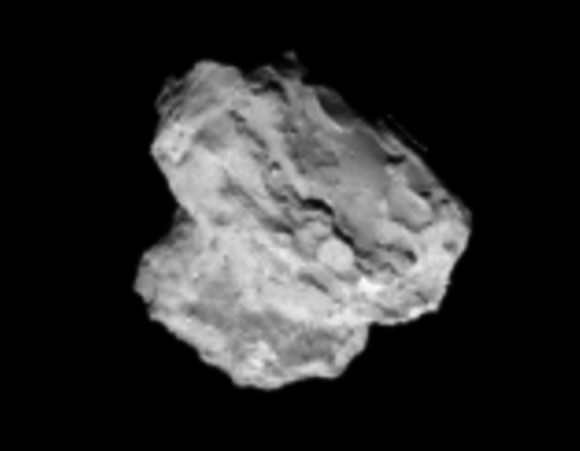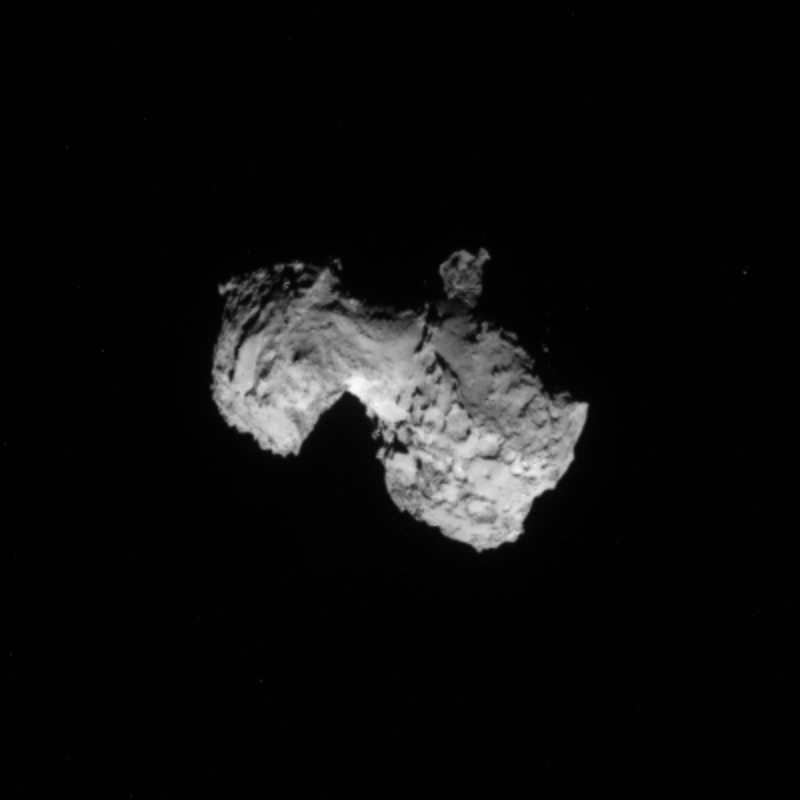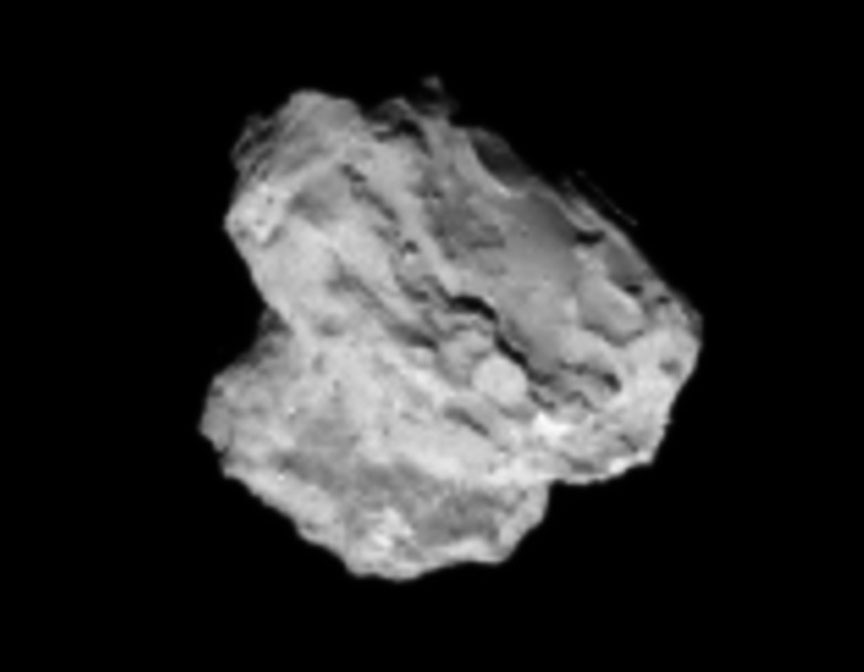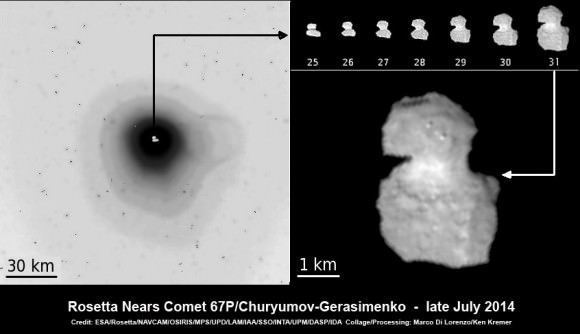Europe’s Rosetta comet hunter achieved another milestone today, Aug 4, swooping in closer to its long sought destination than the International Space Station (ISS) is to Earth – and its revealing the most exquisitely sharp and detailed view yet of the never before visited icy wanderer soaring half a billion kilometers from the Sun.
The absolutely delightful photo above is the latest navcam taken of Comet 67P/Churyumov-Gerasimenko by Rosetta’s navcam camera on Aug. 3 from a distance of 300 kilometers and shows rocks, gravel and tiny crater like features on its craggily surface of smooth and rough terrain with deposits of water ice.
Rosetta will make history as Earth’s first probe ever to rendezvous with and enter orbit around a comet.
Now barely a day away from rendezvous, the European Space Agency’s (ESA) robotic Rosetta spacecraft has closed to a distance of less than 300 kilometers away from Comet 67P and the crucial orbital insertion engine firing.
By comparison, the ISS and its six person crew orbits Earth at an altitude of some 400 kilometers (about 250 miles).
And its getter even closer! – Essentially to what we would call ‘the edge of space’ on Earth; 100 kilometers or 62 miles.
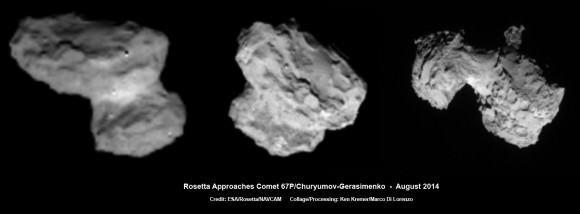
Having successfully completed the penultimate orbit correction maneuver on Aug. 3, the engineering team at mission control at the European Space Operations Centre (ESOC), in Darmstadt, Germany is making final preparations for the probes crucial last orbital insertion burn set for Wednesday, Aug. 6.
The Aug. 3 thruster firing known as the Close Approach Trajectory – pre-Insertion (CATP) burn lasted some 13 minutes and 12 seconds and reduced the spacecraft speed as planned by about 3.2 m/s.
“All looks good,” says Rosetta Spacecraft Operations Manager Sylvain Lodiot, according to an ESA operations tweet.
The final thruster firing upcoming soon on Aug. 6 is known as the Close Approach Trajectory – Insertion (CATI) burn.
The CATI orbit insertion firing will slow Rosetta to essentially the same speed as comet 67P and place it in an initial orbit at a distance of about 100 kilometers (62 miles).
The CATP and CATI trajectory firings have the combined effect of slowing Rosetta’s speed by some 3.5 m/s with respect to the comet which is traveling at 55,000 kilometers per hour (kph).
After a ten year chase of 6.4 billion kilometers (4 Billion miles) through interplanetary space and slingshots past Earth and Mars, the 1.3 Billion Euro spacecraft is at last ready to arrive at Comet 67P for a mission expected to last some 17 months.
The Navcam camera has been commanded to capture daily images of the comet that rotates around once every 12.4 hours.
See below our mosaic of navcam camera approach images of the nucleus captured of the mysterious two lobed comet, merged at a bright band in between as well as an OSIRIS camera image of the expanding coma cloud of water and dust..
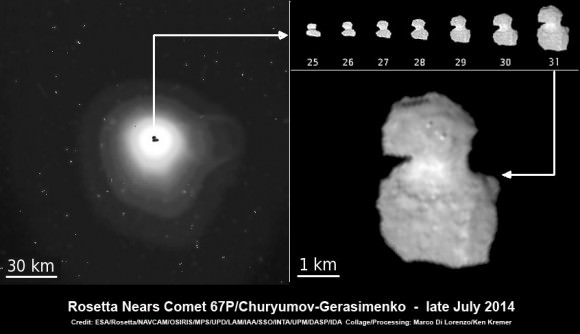
After orbital inertion on Aug. 6, Rosetta will initially be travelling in a series of 100 kilometer-long triangular arcs while firings thrusters at each apex. Further engine firings will gradually lower Rosetta’s altitude about Comet 67P until the spacecraft is captured by the comet’s gravity.
Here is an ESA video showing Rosetta’s movements around the comet after arrival
Video caption: ESA’s Rosetta spacecraft will reach comet 67P/Churyumov-Gerasimenko in August 2014. After catching up with the comet Rosetta will slightly overtake and enter orbit from the ‘front’ of the comet as both the spacecraft and 67P/CG move along their orbits around the Sun. Rosetta will carry out a complex series of manoeuvres to reduce the separation between the spacecraft and comet from around 100 km to 25-30 km. Credit: ESA
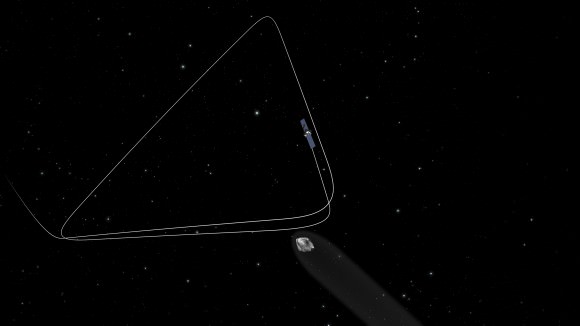
In November 2014, Rosetta will attempt another historic first when it deploys the piggybacked Philae science lander from an altitude of just about 2.5 kilometers above the comet for the first ever attempt to land on a comet’s nucleus. The lander will fire harpoons to anchor itself to the 4 kilometer (2.5 mile) wide comet’s surface.
Together, Rosetta and Philae will investigate how the pristine frozen comet composed of ice and rock is transformed by the warmth of the Sun. They will also search for organic molecules, nucleic acids and amino acids, the building blocks for life as we know it.
Rosetta was launched on 2 March 2004 on an Ariane 5 G+ rocket from Europe’s spaceport in Kourou, French Guiana.
You can watch Rosetta’s Aug. 6 orbital arrival live from 10:45-11:45 CEST via a livestream transmission from ESA’s spacecraft operations centre in Darmstadt, Germany.
Stay tuned here for Ken’s continuing Rosetta, Curiosity, Opportunity, Orion, SpaceX, Boeing, Orbital Sciences, commercial space, MAVEN, MOM, Mars and more Earth and Planetary science and human spaceflight news.
Ken Kremer
